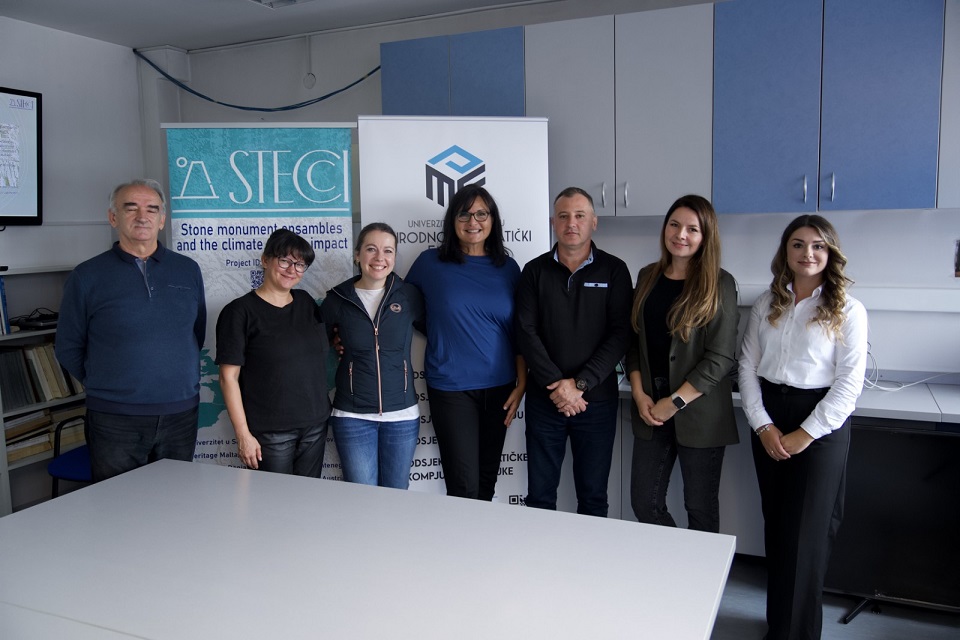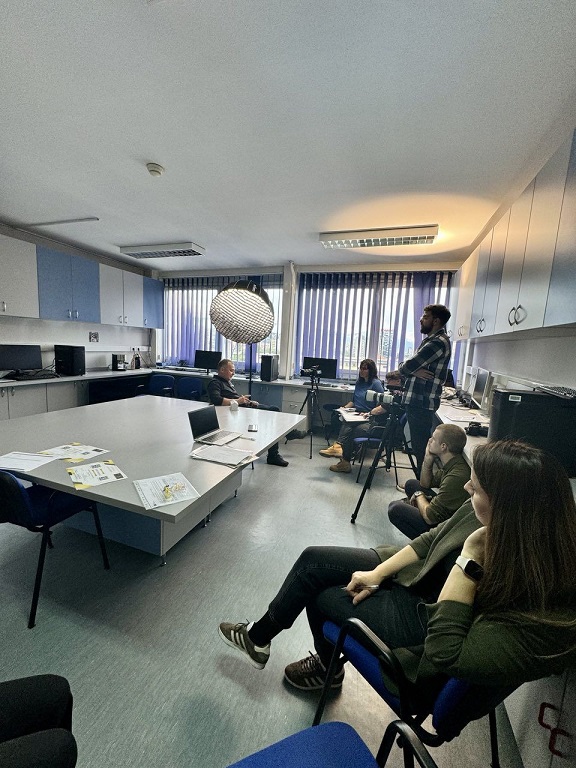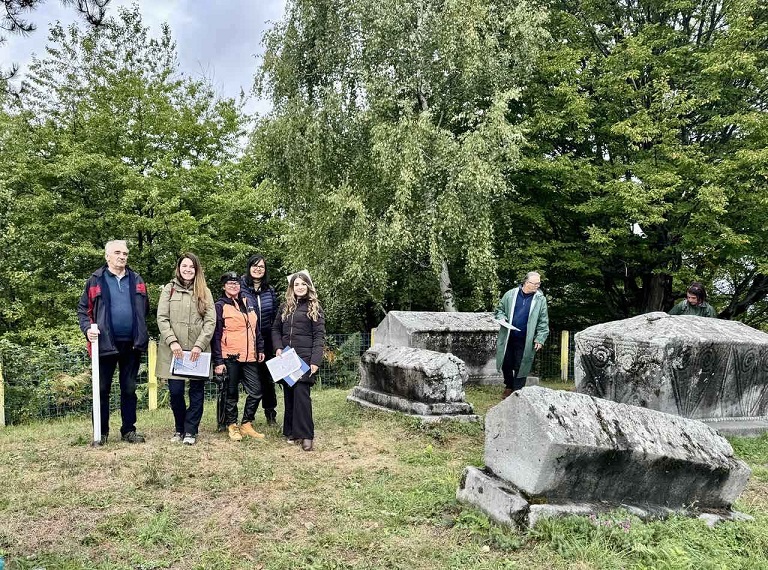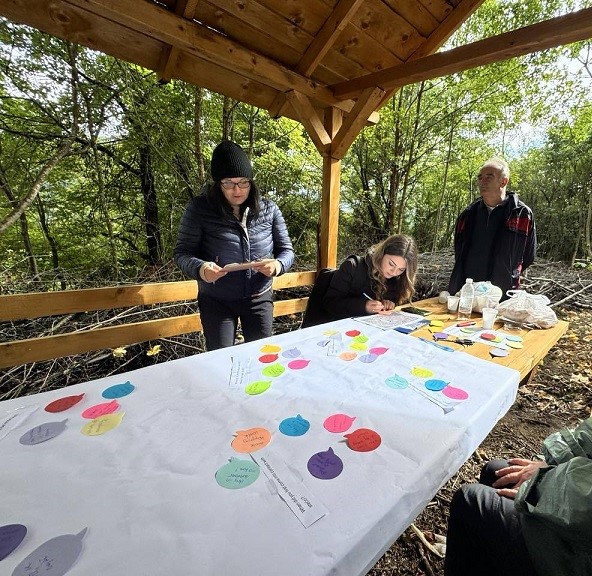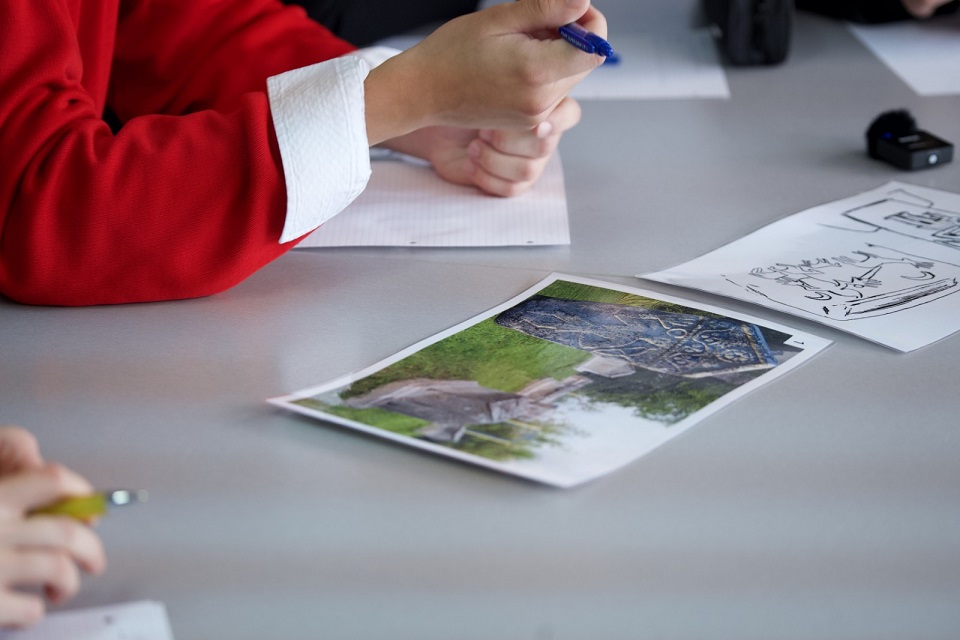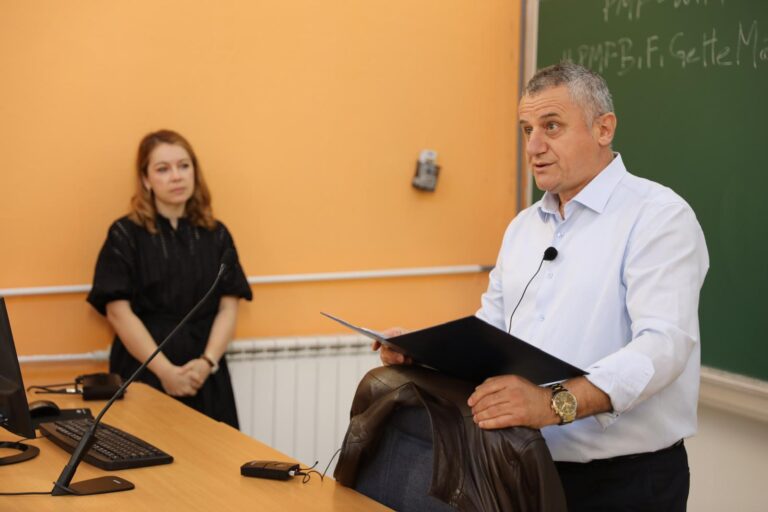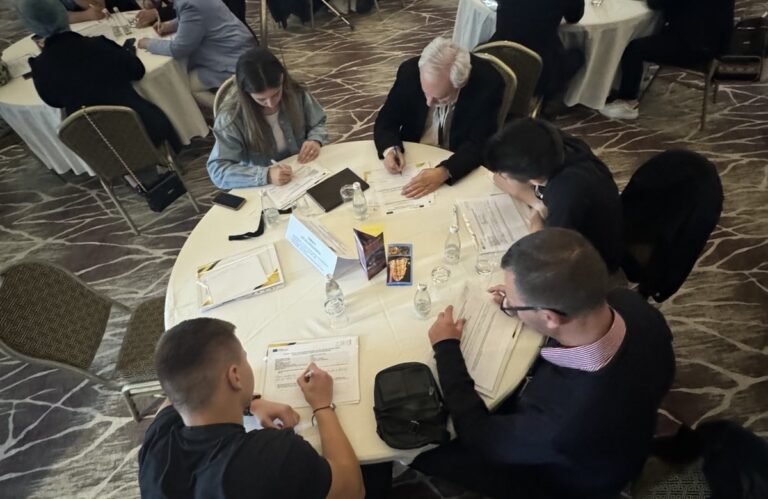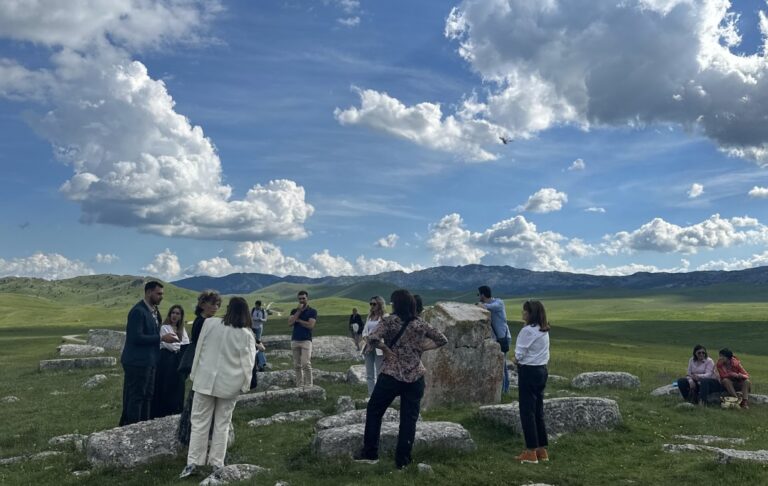Innovative approaches in transdisciplinary research on the cultural heritage of stećci
Stećci are unique medieval tomb monuments located in Bosnia & Herzegovina, Croatia, Serbia, and Montenegro, the European research project STECCI focuses on innovative preservation and valorization strategies for this cultural heritage by doing transdisciplinary research. From the 16th to the 17th of September 2024, the “My STECCI Story” workshop was hosted by the University of Sarajevo (UNSA) and the Centre for Social Innovation in Vienna (ZSI). In the course of the workshop, a mix of three research activities was conducted focusing on the historical, spatial, and social or socio-cultural relevance of stećci.
STEĆCI ON A “MISSION TO MARS” – COME WITH US!
The one-day workshop commenced with a new tailor-made workshop approach “Mission to Mars” involving students from various disciplines (geography, archaeology, fine arts). Initially, participants were skeptical but soon developed a positive group dynamic. They used design thinking to explore how extraterrestrials might interpret Earth’s cultural symbols, specifically tombstones such as stećci. The exercise enabled to fostering of innovative thinking by encouraging participants to step outside conventional perspectives and to generate new questions, which can lead to new socio-cultural interpretations of the stećci as well as new research questions. Topics of this semi-structured discussion included the comparison between aliens (from Mars or an even more distanced planet) and human rituals, symbolic meanings behind statues and monuments, and the role of art and symbolism in hypothetical alien societies.
In the following, two multi-stakeholder interviews were conducted with an academic expert and a community member who is the founder of a cultural foundation linked to stećci.
Prof. Edin Bujak – a medieval archaeologist and part of the STECCI project consortium – provided insights into his research on stećci. In the storytelling session, he highlighted the cultural relevance of these tombstones and the threats they face including climate change and further man-made hazards. The interviewee also discussed the challenges of dating stećci due to the lack of inscriptions and the importance of further research to understand their historical context. He emphasized the role of women in medieval Bosnian society as evidenced by their frequent depictions alongside men on stećci. In addition, he stressed the impact of climate change on the degradation of these necropoles and the need for protective strategies.
Mr Perica Mijatovic, a community member of the wider area of Kopošići and co-founder of the cultural foundation Fondacije Starobosanski grad Dubrovnik iz Ilijaša, shared his family biography and personal relation to stećci. Furthermore, he discussed the local community’s involvement in preserving these historical artefacts. While this interview focused on the community’s relation with the necropole, he also highlighted the importance of continued research and protection efforts.
An interview meeting with the internationally working sculptor Adis Elias Fejzić took place later in the artist’s studio (after the mapping walks as the final sequence of the workshop programme). The artist, who completed his PhD on the stećci in 2016 in Australia, discussed how these medieval necropoles have influenced his artistic work such as for stage design in contemporary theatre. The conversation delved into the cultural and identity conflicts and the ongoing challenges of preserving history. He also emphasized the importance of the stećci as artistic inspiration and a symbol of Bosnia’s complex heritage, equally. The artist also recounted his initial conscious encounter with the stećci during his childhood. Although close to stećci while growing up, his deeper engagement began after the Bosnian War and was further developed through his artistic research. These tombstones became a symbol of his cultural roots and a source of inspiration for his own sculptural work.
SENSING AND MAPPING CHALLENGES AND OPPORTUNITIES FOR STEĆCI IN KOPOŠIĆI
During the second part of the workshop participants from the community, including an architect and a photographer engaged in the mapping walk at the Kopošići necropole. The site visit highlighted the challenges of accessing the necropole due to poor road conditions and slippery terrain. The participants noted that the necropole is still used as a private cemetery, and discussions centered on the need for better infrastructure and public awareness initiatives. The co-analysis session identified key topics for development – particularly in the context of education and infrastructure, which are crucial for preserving stećci.
The workshop was complemented on day two by an expert feedback meeting with UNSA, ZSI, and ass. Prof. Biljana Maslovarić from the University of Montenegro is a member of the STECCI Ethical Advisory Board. Discussions focused on ethical and research integrity aspects when working with the expertise of the local community and on increasing the visibility of the STECCI project. It was discussed to foster this process through public outreach initiatives such as information stands at universities, museums, and tourist offices. Ideas for engagement included printed promotional materials, quizzes, and the introduction of the STECCI app to map stećci tombstones with the help of mobile phones. Further plans were discussed to highlight stećci sites across Bosnia & Herzegovina with an exhibition linked to the research and public engagement activities of current STECCI social labs.
This workshop effectively explored the cultural importance of stećci, the threats, and the potential strategies for their preservation while building an interdisciplinary collaboration and fostering public engagement.
- Learn more about the STECCI project.
- Learn more about stećci in BiH (website hosted by Prof. Edin Bujak with texts in Bosnian/Serbian/Croatian).
- Learn more about previous events hosted by the Fondacije Starobosanski grad Dubrovnik iz Ilijaša (Bosnian/Serbian/Croatian).
- Learn more about the “My STECCI story” workshop in BiH (in Bosnian/Serbian/Croatian)
Meet the ZSI team fostering co-creation, citizen science, and social innovation for cultural heritage in the STECCI project: Pamela Bartar, Nesrin Sen-Buttermilch, and Gabor Szüdi.

